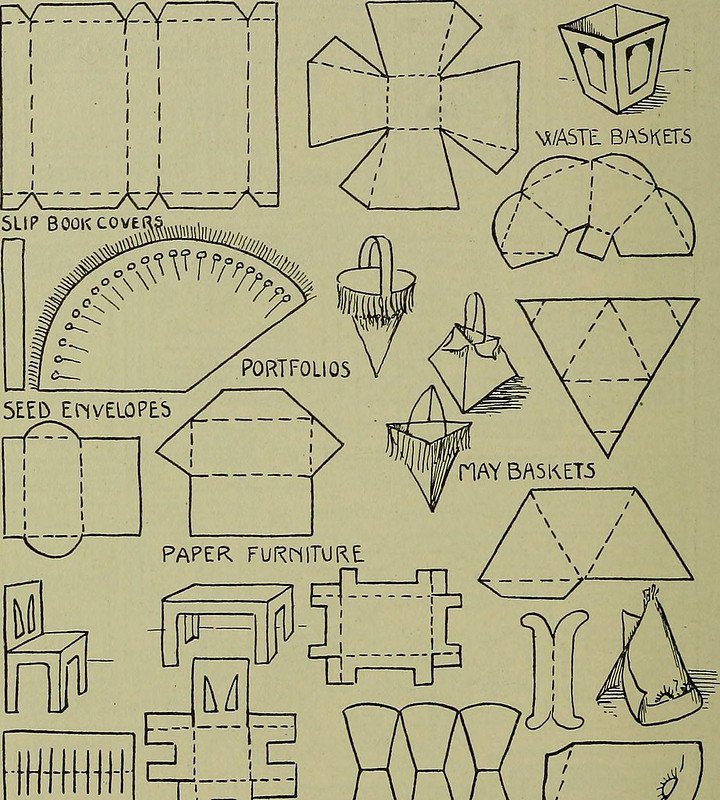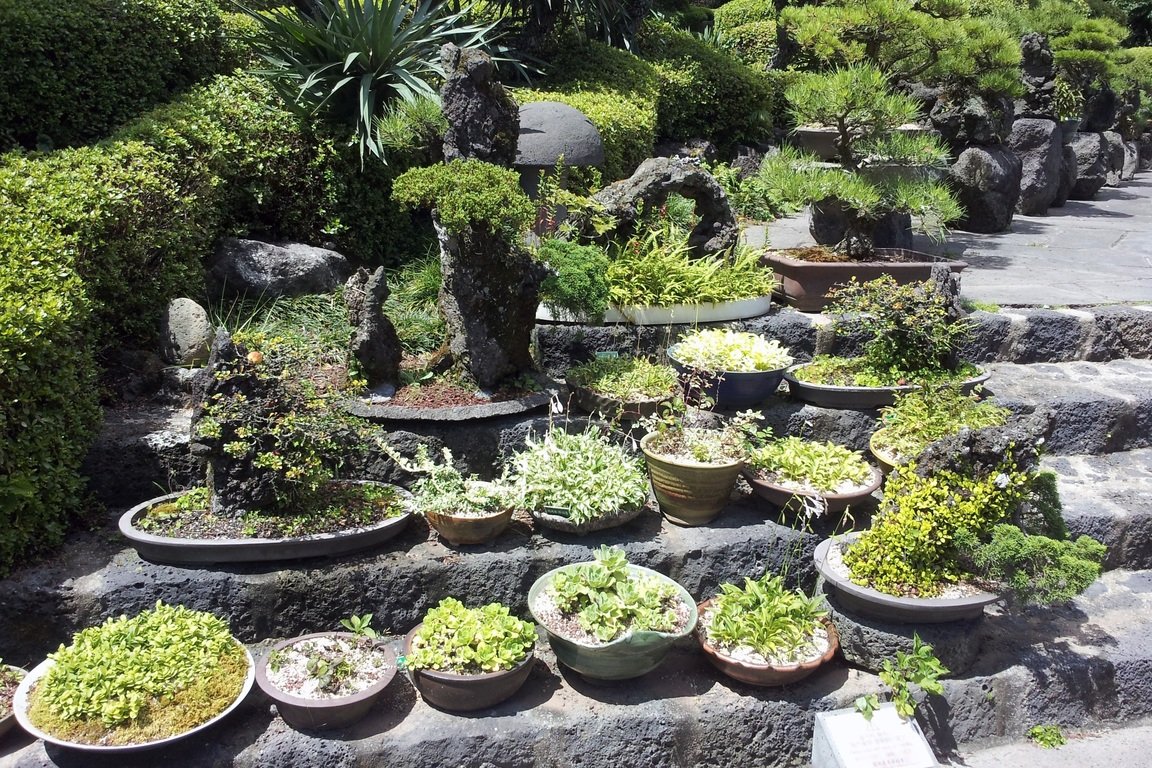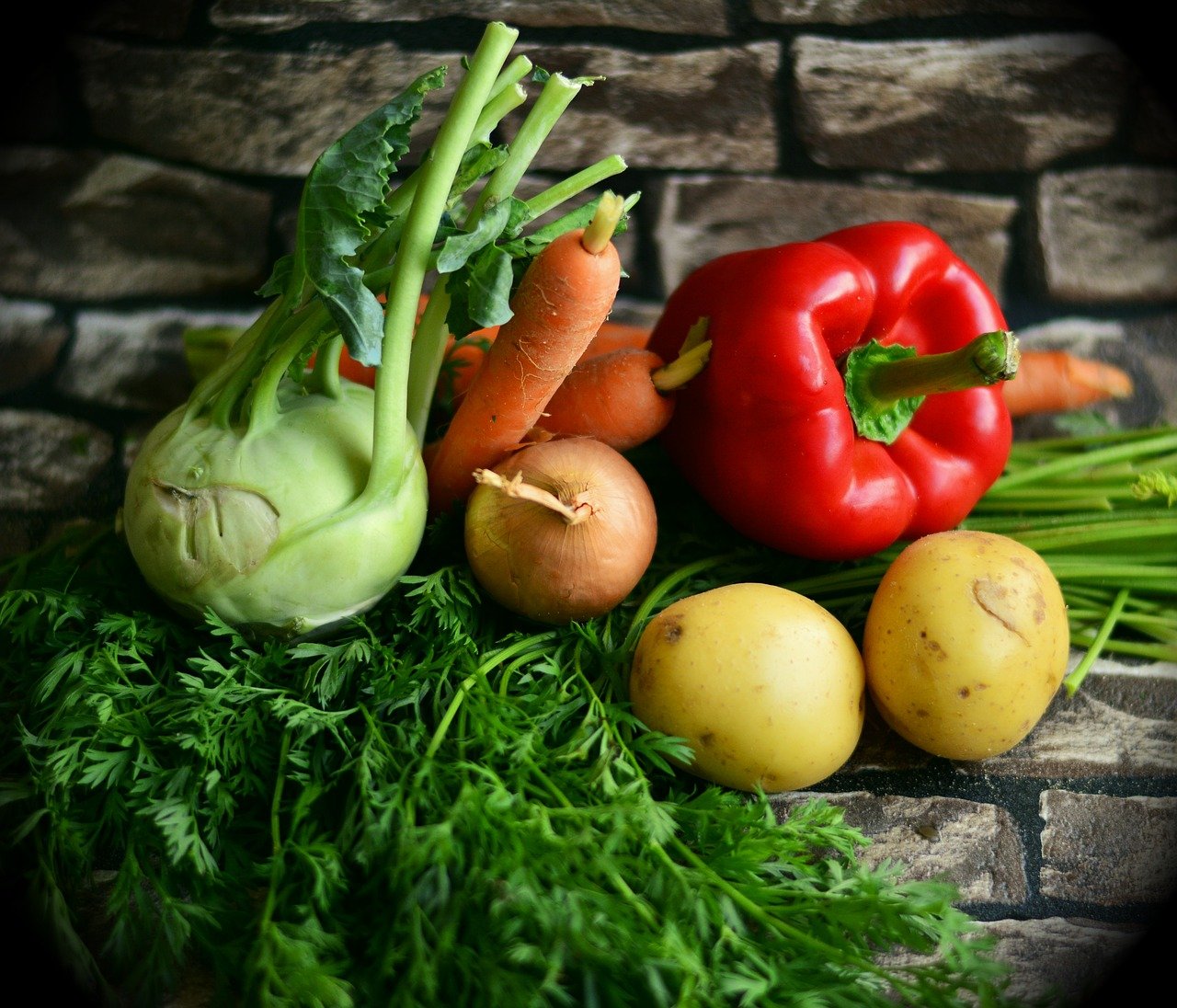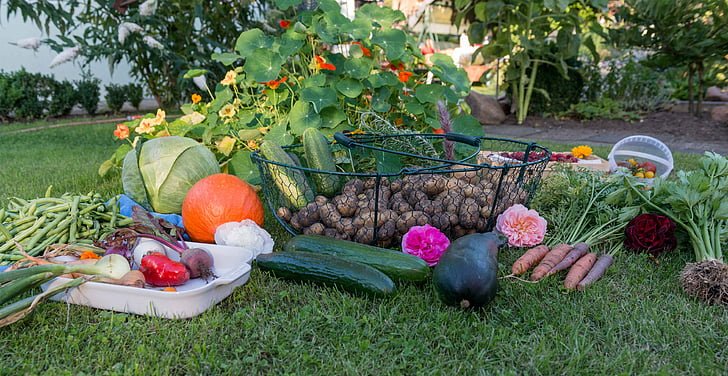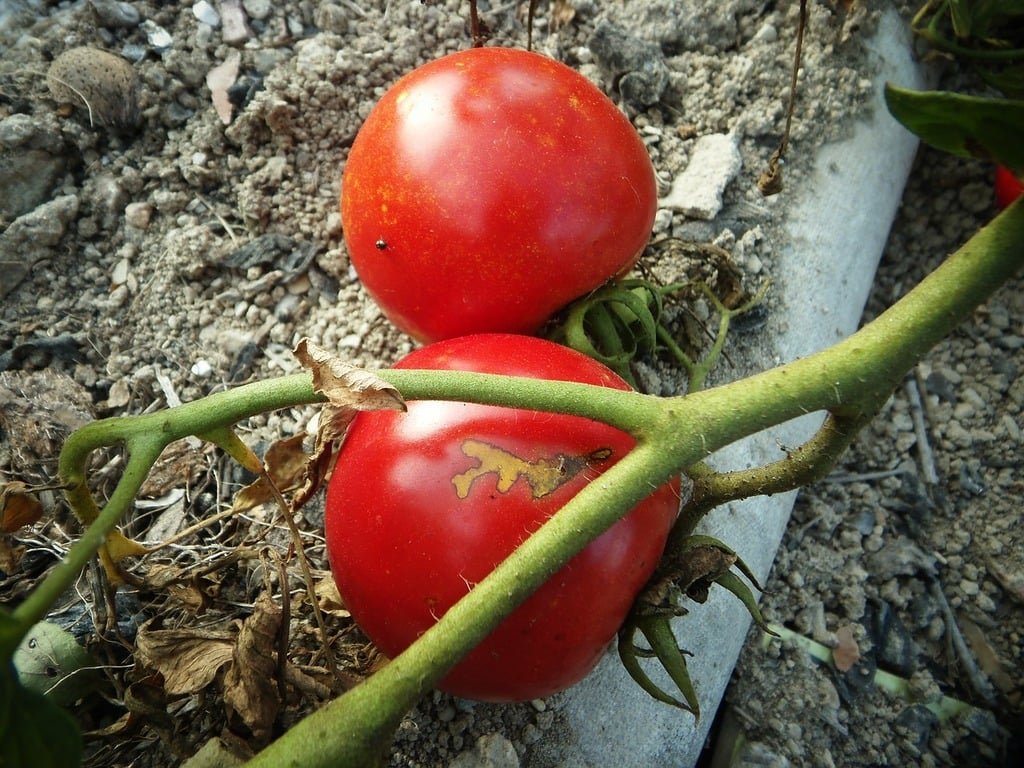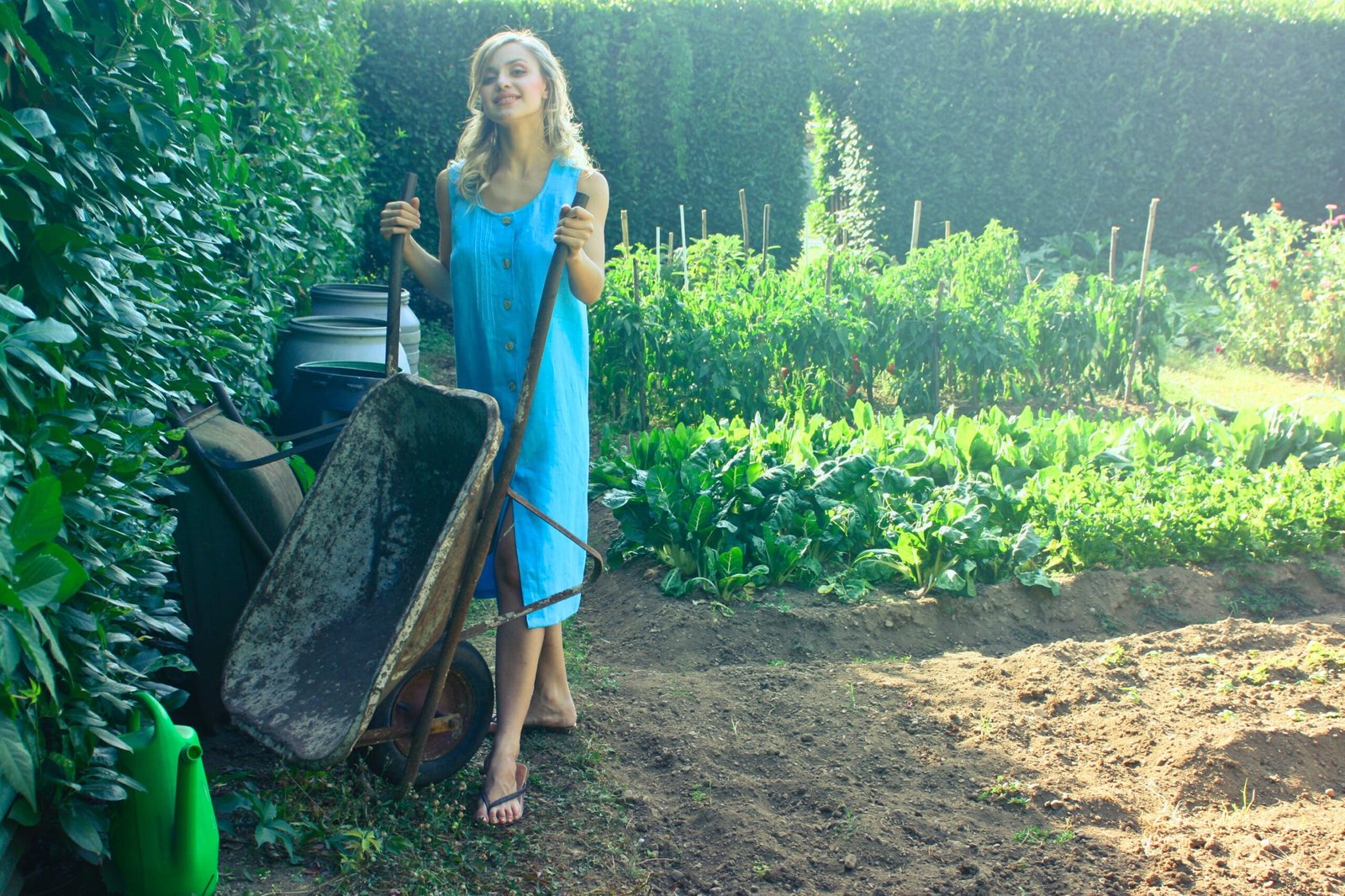Embark on a journey from seed to feast as we delve into mastering home vegetable gardening. Imagine the joy of plucking vibrant, fresh vegetables right from your backyard, a testament to the satisfaction of cultivating your produce. In this guide, we’ll navigate the intricacies of vegetable garden layout, share insights into effective vegetable gardening practices, and reveal the key to transforming your home garden into a thriving haven that rivals even the finest offerings at the grocery store. Get ready to cultivate abundance, nurture growth, and savor the rewards of your vegetable haven.
Table of Contents
Optimal Garden Location: Balancing Light and Water for Success
When establishing your garden oasis, making the right choice about its location is pivotal. Regardless of your preferred flora, ensuring your chosen spot satisfies two fundamental prerequisites for achieving gardening triumph: ample water supply and abundant sunlight.

Sunlight Sustenance: A Non-Negotiable Factor
Just as we require sustenance, so do our green companions. Sunlight serves as the lifeblood of plants, initiating the process of photosynthesis. For vegetables that aspire to reach their full potential, a minimum of 6 to 8 hours of direct sunlight daily is non-negotiable. Unobstructed by barriers like trees, shrubs, or fences, this light allows them to thrive unchecked.
Selecting a shady locale for sun-loving vegetables will yield disappointing results. However, select varieties resilient to such conditions if your patch receives partial shade. Lettuce, kale, chard, spinach, chives, cilantro, parsley, and thyme are steadfast contenders. For those inclined towards root vegetables like carrots, radishes, and beets, a site offering at least 4 hours of direct sunlight is feasible. Alternatively, embracing container gardening can prove advantageous if a sunny patio graces your space. This approach enables the placement of light-seeking vegetables and herbs, including tomatoes, cucumbers, beans, basil, dill, and rosemary, in an environment conducive to their prosperity.
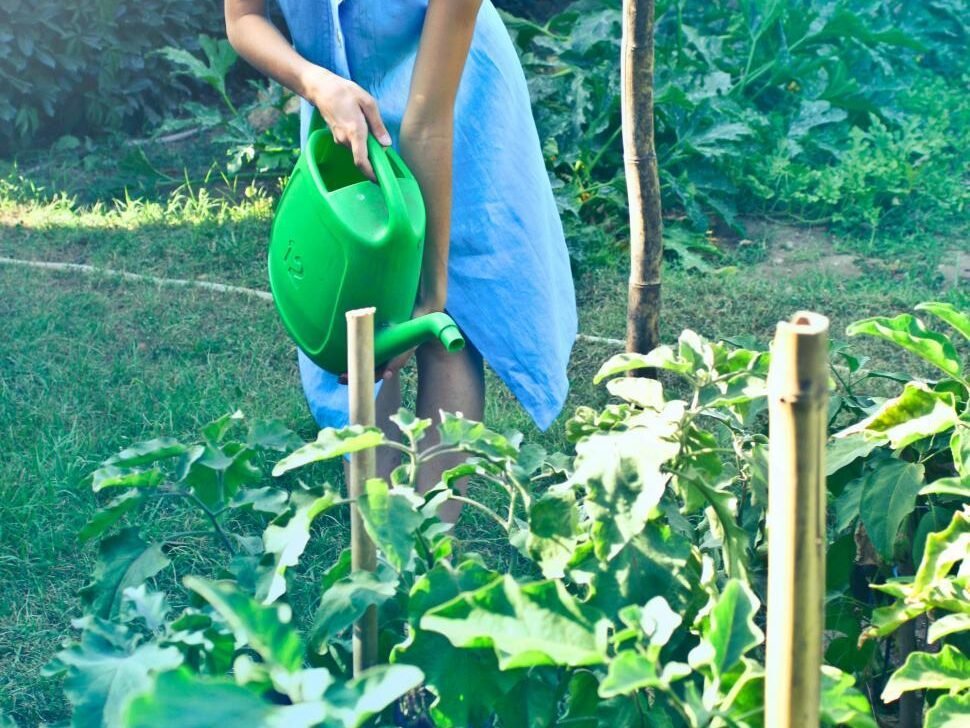
Strategic Water Proximity: A Key Consideration
Contemplating water access can be as vital as sunlight deliberations. Proximity to a water source bodes well for your gardening endeavor. Early in their lifecycle, fragile plants, whether from seeds or seedlings, necessitate regular watering. This practice nurtures robust root and stem development during the initial weeks. Subsequently, transitioning to infrequent yet substantial watering proves beneficial. By allowing water to permeate more profoundly into the soil, roots are motivated to delve further, establishing a foundation for enhanced nutrient absorption, which is vital for their well-being. Employing soaker hoses or timed drip irrigation can mitigate water wastage and minimize the time spent on watering tasks.
In the pursuit of a flourishing garden, harmonizing sunlight exposure and water accessibility is paramount. Your cultivation space’s alignment with these principles will undoubtedly sow the seeds of success and nurture a thriving, verdant haven.
Embarking on planning your vegetable garden layout presents two intriguing options: row cropping and intensive cropping. Each approach boasts unique benefits, allowing you to tailor your gardening strategy to your preferences and needs.

Row Cropping: Strategic Orderliness for Spacious Gardens
The row cropping technique involves arranging your plants in a single-file fashion, ensuring they’re positioned at least 18 inches apart. This layout facilitates easy movement between plants and proves advantageous for more extensive vegetable gardens, streamlining the use of mechanical tools like tillers to combat pesky weeds. However, the trade-off comes in footpath allocation, reducing the available planting area for your vegetables.
What is the best method for Row Cropping?
For tall plants, a north-side placement in the garden is recommended. Utilize this side for naturally tall plants that can be trained to grow on vertical supports, such as peas, cucumbers, and beans. Consider cost-effective ingenuity by crafting your A-frame trellis, an ideal support structure for cultivating vertical vegetables.
Intensive Cropping: Maximizing Yield through Closeness
Opt for intensive cropping to unlock your garden’s full productivity potential. In this method, you position two to three plants within a roughly 4-foot-wide bed, also known as a wide row. During planting, ensure that the leaves of adjacent plants barely touch, allowing for efficient space utilization. Intensive cropping maximizes soil coverage, proving effective for most vegetable types—though it might not suit vining plants like cucumbers. The main challenge of this approach is that manual weeding becomes necessary due to the proximity of plants.
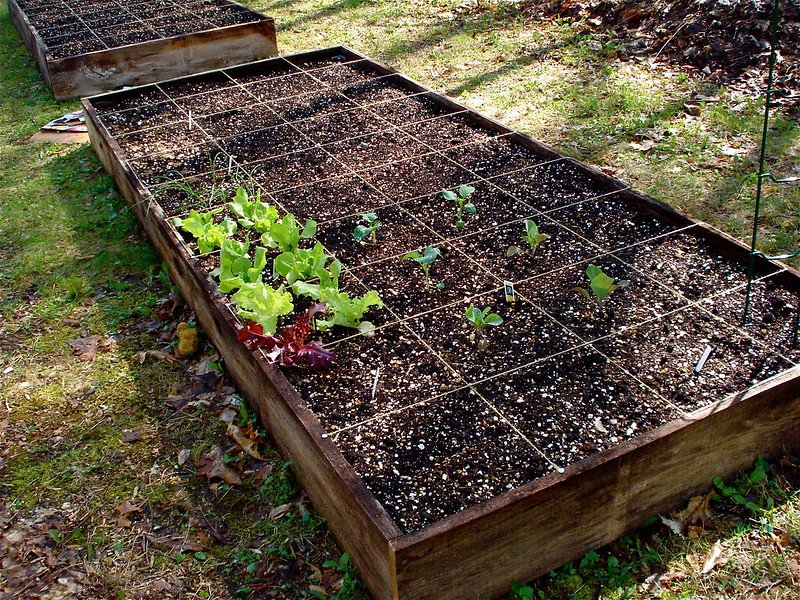
Square-Foot Gardening: An Intensive Cropping Spin
Delve into a specialized version of intensive cropping with the square-foot method. You establish a structured planting scheme by subdividing a raised 4×4-foot garden bed into 1-foot squares using a physical grid (like lattice strips). This method demands eight cubic feet of premium garden soil to fill the 6-inch-high-sided bed. Planting proportions follow a straightforward formula: one extra-large plant per 1×1-foot square, four large plants per square, nine medium plants per square, and sixteen small plants per square. Feel free to mix and match to suit your preferences and requirements.
As you embark on your vegetable gardening adventure, selecting between row and intensive cropping will set the tone for your cultivation experience. Whether you opt for meticulous order or abundant closeness, your garden layout will shape a bountiful and vibrant haven of homegrown delights.
Kickstart Your Gardening Journey with a Small Space
For those stepping into gardening for the first time, the wisdom lies in commencing with modest aspirations. Embrace the beauty of starting small, for the rewards reaped from a compact garden can outshine the frustrations often accompanying larger endeavors. Moreover, immersing yourself in a few foundational gardening principles before diving into a grand project is prudent. This measured approach grants insight into the time and effort gardening entails and unveils your affinity for the outdoor rituals of planting, nurturing, and tending. In this voyage of discovery, you’ll uncover your family’s summer produce consumption pattern and preferences, ensuring a gratifying experience.

The Art of Beginning: Cultivating a 6×6-Foot Haven
For fledgling gardeners, a 6×6-foot garden plot stands as an ideal canvas. In this nurturing space, select up to five distinct types of vegetables that capture your curiosity. Dedicate a portion of your plot to each chosen variety, planting a modest number of each type. This balanced approach guarantees an ample harvest of fresh produce for your seasonal feasts while simplifying the upkeep requirements. Such manageable dimensions offer an excellent platform for mastering the essentials of cultivation.
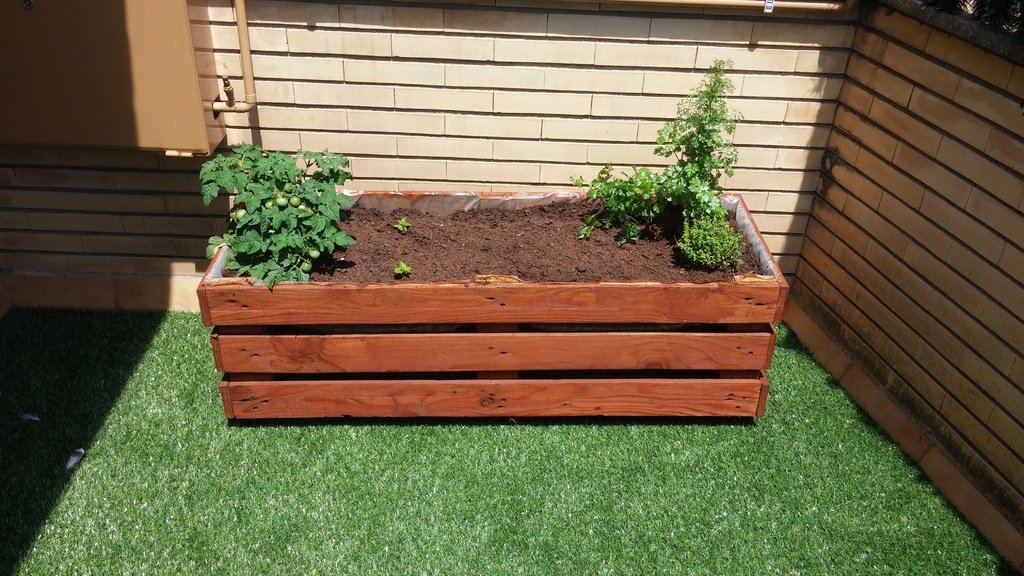
Beyond Boundaries: Thriving with Container Gardening
Should the expanse of a traditional garden be unavailable, container gardening emerges as a splendid gateway to this green pursuit. Containers extend their embrace to sunny decks and balconies, rendering the lack of a yard irrelevant. Laden with versatility, these vessels accommodate a diverse array of vegetables, allowing you to embark on your journey irrespective of your living arrangements.
Inaugurating your gardening escapade through a small space embodies prudence and foresight. By planting the seeds of learning and enthusiasm within these modest confines, you’ll cultivate vegetables and a flourishing passion for the art of nurturing nature.
Cultivate Culinary Delights: Planting with Palate Passion
Unlocking the secrets of a thriving vegetable garden begins with a simple question: What tickles your taste buds? Your personal culinary preferences hold the key to an enchanting garden journey. When crafting your green haven, there are several key considerations to ensure a harmonious planting selection.
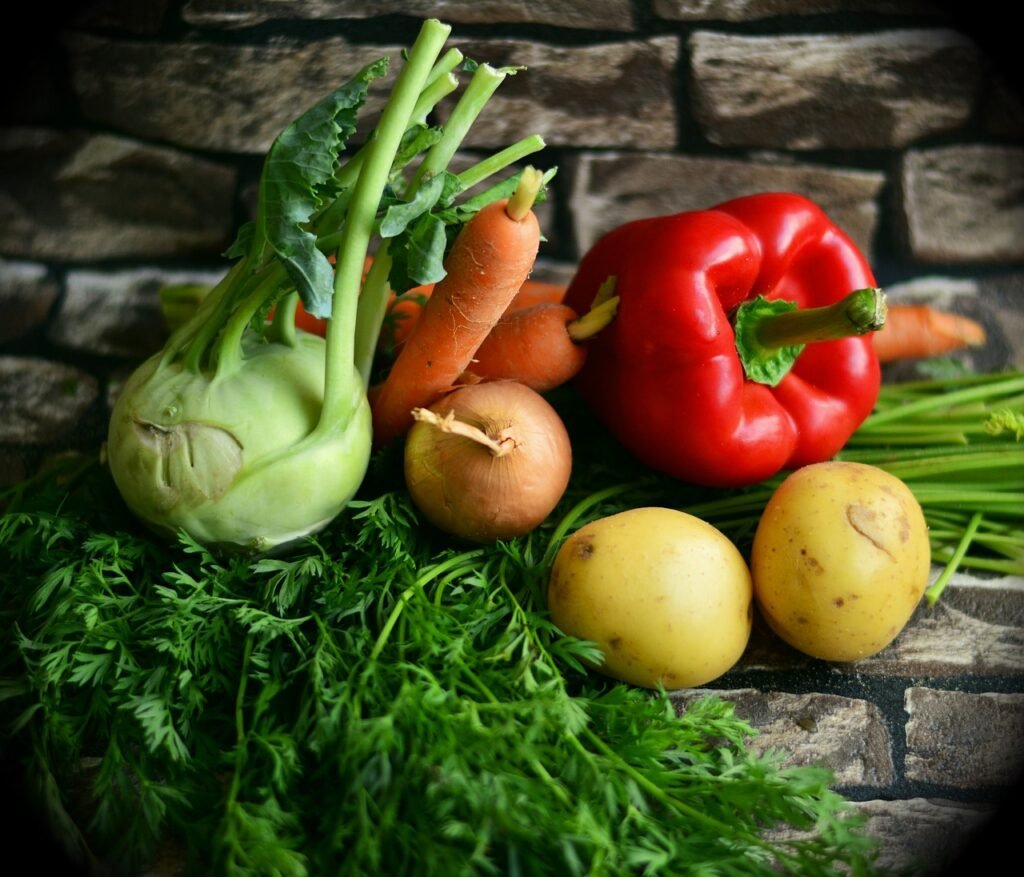
Exquisite Selection: The Fine Art of Vegetable Varieties
Delve into the details provided on seed packets, tags, or labels, for each vegetable variety is imbued with unique traits. This intricate dance of characteristics determines whether a plant thrives in containers or small garden spaces, its susceptibility to diseases, its yield potential, and its ability to withstand varying temperatures. Start your selection journey with vegetables that tantalize your palate, then navigate the landscape of sizes and care requirements.
Harvesting Happiness: Gauging Productivity and Needs
Contemplate the culinary needs of your household as you embark on your planting expedition. Estimate your consumption and whether you plan to preserve excess produce through freezing, canning, or sharing with others. It’s vital to strike a balance between planting enough to fulfill your needs without overwhelming your garden space. Some vegetables, such as tomatoes, peppers, and squash, yield continuously throughout the season, often requiring fewer plants than anticipated. Conversely, vegetables like carrots, radishes, and corn offer a one-time harvest, necessitating reseeding for subsequent crops.
Seasonal Symphony: Orchestrating Successive Harvests
Embark on a journey of perpetual abundance by strategically planting a symphony of cool and warm-weather vegetables. Your garden’s calendar w ill be painted with a seamless transition from spring to summer to fall harvests. As the early spring embraces you, sow the seeds of lettuce, arugula, peas, radishes, carrots, and broccoli. As these cool-weather champions are harvested, make way for the warm-weather protagonists: tomatoes, peppers, eggplants, and aromatic herbs. Autumn’s embrace is rich with rewards—potatoes, cabbage, and kale grace your table.
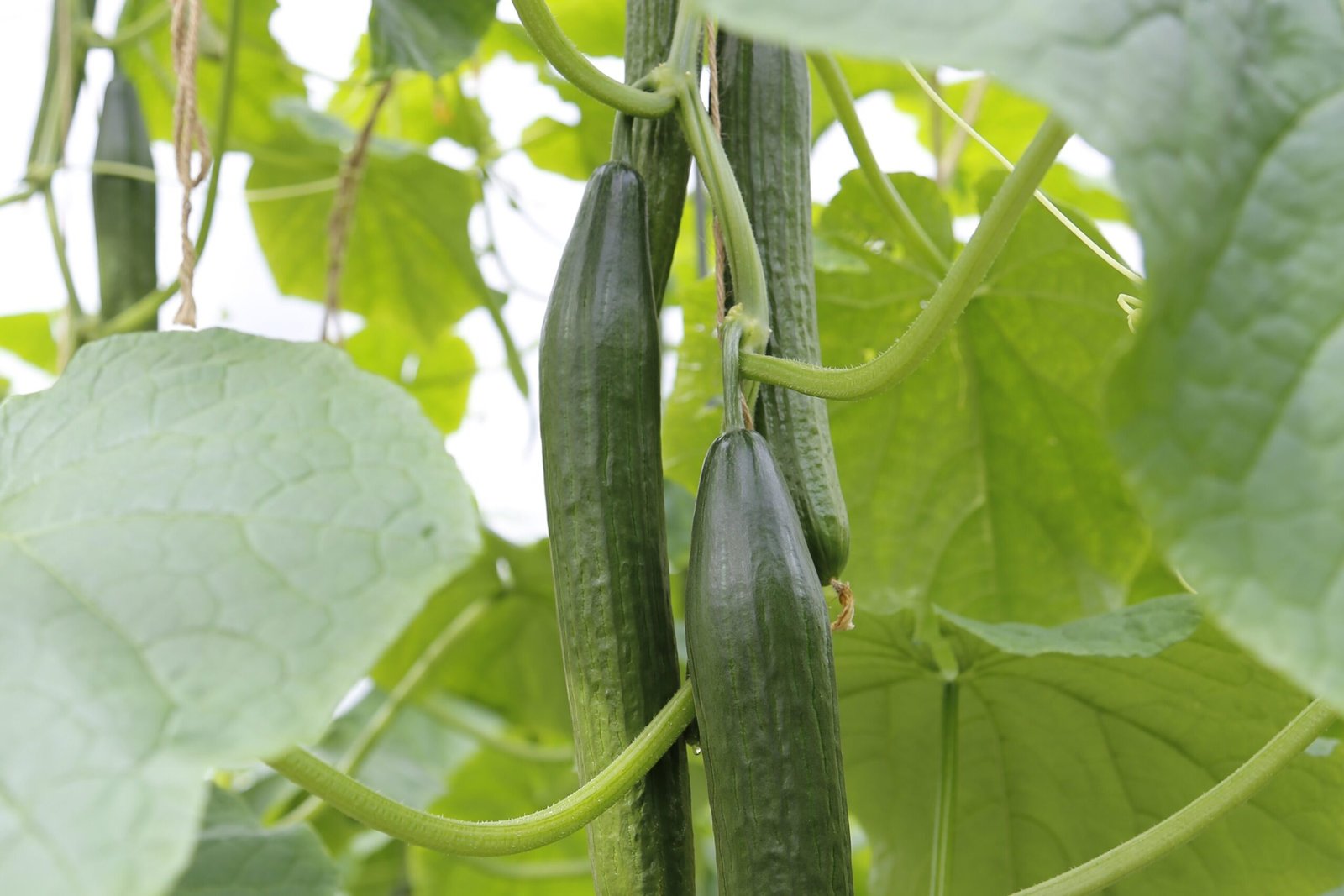
Vertical Virtuosity: Elevating Yields with Vining Crops
Harness the untapped potential of vertical garden space with vining crops like green beans and peas. These plants add visual allure to your garden and maximize yields per square foot. The upward ascent of these crops transforms your garden into a thriving example of productivity.
With each seed you sow and each plant you nurture, your garden becomes an expression of your culinary identity. By aligning your selections with your taste preferences and harmonizing them with considerations of productivity and seasonality, you’ll cultivate not just vegetables but a symphony of flavors that resonate with your senses.
Nurturing Nature’s Canvas: Enriching Your Garden Soil for Abundant Harvests
The foundation of a flourishing vegetable garden rests upon the canvas of its soil. Providing premium soil is paramount to coax the best from your garden’s potential. Vibrant, fertile soil is an embodiment of ease and productivity. Elevate your gardening experience by understanding the intricacies of soil texture and composition.

Sensory Insights: Decoding Soil Texture
A tactile exploration of your soil provides profound insights. Scoop up a handful and let it rest in your palm. The texture speaks volumes. Gritty? Excessive sand content. Powdery? Abundant silt. Sticky, even when wet? A prevalence of clay. The interplay of these elements in varying proportions shapes the soil’s texture, influencing drainage and nutrient availability.
The coveted soil texture is dark, crumbly, and teeming with life. Regardless of the initial surface, all soils can transform through the infusion of organic matter. Take sandy soils, for instance. Their coarse particles allow water and nutrients to escape rapidly. Yet, by introducing organic matter, like compost, gaps are bridged, enhancing water and nutrient retention.
Clay soils pose a different challenge, as their densely packed particles retain moisture but restrict root aeration. Introducing compost fosters the separation of these minute clay particles, permitting improved drainage and root respiration. In case of uncertainty about your soil type, consider professional soil testing for a precise analysis.
The Art of Preparation: Crafting a Nourishing Bed
Begin your soil enhancement journey by incorporating needed amendments, such as compost, into the soil. Cultivate this transformation with a tiller or spade, but be mindful not to compact the freshly tilled earth by walking on it. Afterward, ensure smoothness with a rake and then provide thorough hydration. Allow the bed to rest, allowing the soil amendments to weave their magic before planting.
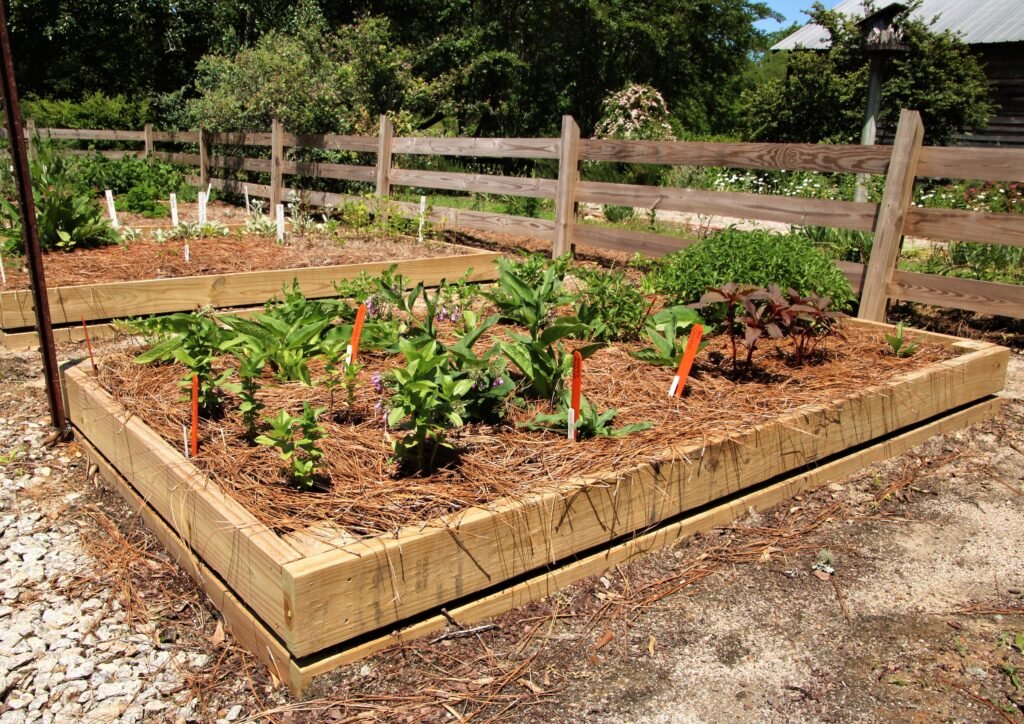
Elevated Gardening: Raised Beds as a Solution
Raised garden beds are an ingenious alternative for those wrestling with poor soil quality. Construct these beds over existing lawns, cushioned with layers of newspaper at the base. Fill the frame with enriched soil, bypassing the need for extensive digging. This method simplifies the process and offers an elevated planting haven.
As you embark on your soil nurturing journey, remember that beneath each layer of earth lies the promise of vitality and abundance. You lay the groundwork for a blossoming garden with vibrant life and bountiful harvests by decoding texture, infusing organic matter, and crafting a fertile bed.
Guiding Your Garden: Pest Prevention for Vibrant Vegetables
The pursuit of thriving vegetable plants often encounters the challenge of pests. While some issues demand tailored solutions, adhering to fundamental guidelines will bolster your defense against these garden invaders.
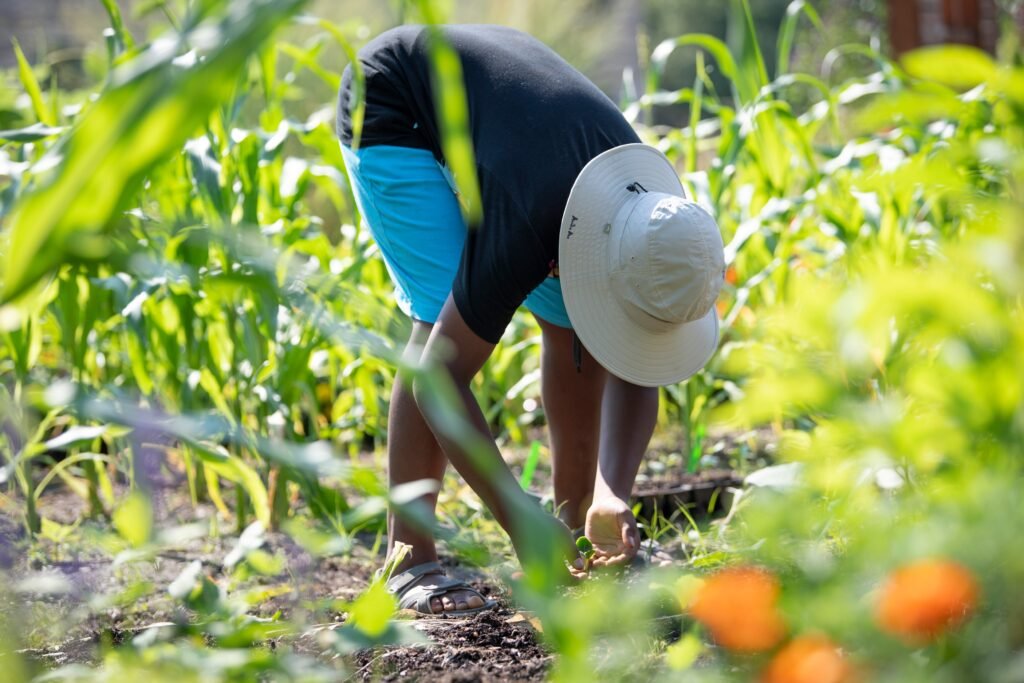
Weeding Wisdom: Averting Weed Competition
Weeds are stealthy adversaries, vying for the same resources as your beloved vegetables. To thwart their advances, adopt a vigilant approach. Employ a clean straw or compost layer as mulch to discourage weed growth around larger plants like tomatoes. Additionally, a well-utilized hoe can disrupt weed seedlings that dare to emerge.
Repel Unwanted Guests: Shielding Against Animals
Significant pests like deer and rabbits can unleash havoc upon your edible haven. For deer deterrence, an 8-foot-tall fence stands as an imposing sentinel. To outwit burrowing critters, extend the fence 6 inches beneath the soil. This underground barrier prevents them from tunneling their way in, safeguarding your garden’s bounty.
Confronting Crawling Invaders: Tackling Destructive Insects
Manual intervention can be remarkably effective in the face of limited insect infestations—Handpick more giant insects and caterpillars, immersing them in a bucket of soapy water. When dealing with larger insect populations, explore insecticidal soap sprays readily available at garden centers. Should chemical intervention be necessary, adhere closely to the manufacturer’s recommendations.
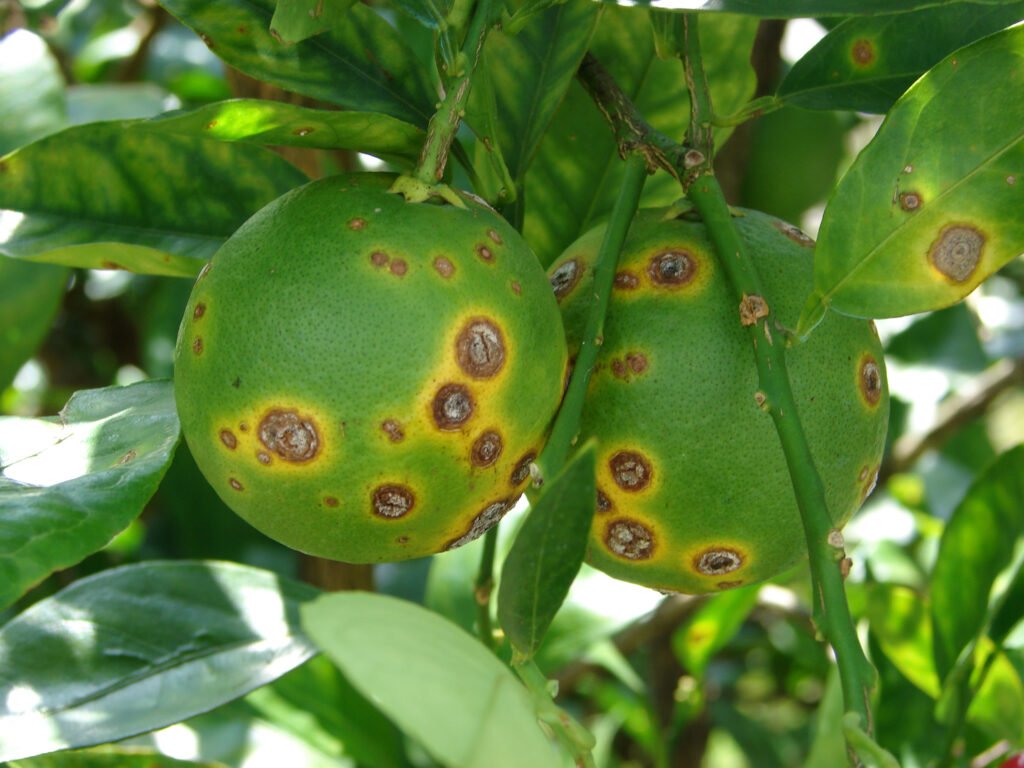
Evasion of Fungal Foes: Battling Disease
Fungal diseases pose a persistent threat, but a proactive stance can mitigate their impact. Opt for soil watering over leaf watering to reduce the likelihood of disease transmission. If sprinklers are utilized, time them for early mornings to permit leaves to dry by nightfall. Swiftly remove and dispose of afflicted plants to curtail disease spread. Caution should be exercised when disposing—avoid adding diseased plants to your compost pile. Preventive measures extend to growing disease-resistant vegetable varieties and practicing crop rotation, where the location of plants is altered annually to inhibit the buildup of disease-causing microorganisms.
Encompassing these tenets in your gardening practice fortifies your garden’s resilience against pests and diseases. In nurturing your vegetable patch with care and vigilance, you bestow upon it the power to thrive and flourish.
As we bid farewell to this exploration of vegetable gardening, we find ourselves amid a lush landscape of flavors, creativity, and connection with the earth. From the very inception, when we carefully designed our vegetable garden layout, we embarked on a journey that harmonizes nature’s rhythms with our aspirations. This journey isn’t just about plants; it’s about nurturing a way of life.
In the symphony of tastes, growing what we love to eat became more than a choice; it became a declaration of devotion to flavors that invigorate our senses. With each nurtured plant, we’ve woven ourselves into a tale of growth, resilience, and sustainability. The tactile sensation of rich soil beneath our fingers, the act of thwarting weeds and repelling pests—every gesture has been an affirmation of our commitment to the flourishing of nature.
The garden’s embrace transcends boundaries. With every sun-kissed tomato plucked and every succulent cucumber savored, we’ve tasted the essence of our labor. This journey surpasses grocery store aisles—a communion with the earth that whispers secrets of abundance. From garden to table, we’ve discovered the art of culinary creation that resonates with authenticity and vibrancy.
As we step back to admire the vibrant tableau of our vegetable garden, we’re not merely beholding plants; we’re witnessing a canvas we’ve painted with dedication and love. With each season, we’ve breathed life into this space, transforming it into a sanctuary of growth, a testimony to resilience, and a haven of flavors.
Our vegetable garden isn’t just a garden; it’s an embodiment of our values, an expression of our connection to the earth, and a legacy of sustenance for generations to come. It’s a reminder that cultivating vegetables is nurturing life, weaving stories, and embracing a lifestyle that celebrates the beauty of nature’s bounty. So, as we bid farewell to this journey, let us carry forward the wisdom of the garden, for in its flourishing, we find the echoes of our growth, our connection to the earth, and the abundance of the heart.


